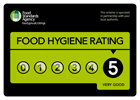Design and Technology
Intent
At Walderslade Primary School, we are committed to providing all children with learning opportunities to engage in design and technology. We believe design and technology is about designing and making products for s specific user and purpose. It involves children in learning about the world we live in and developing a wide range of knowledge and skills through designing and making. It helps children to think through problems creatively, about how to organise themselves and how to use knowledge and skills to bring about change and to shape the environment. Through design and technology, children become discriminating and informed users of products and become innovators.
The National Curriculum for Design and Technology aims to ensure that all pupils:
- develop the creative, technical and practical expertise needed to perform everyday tasks confidently and to participate successfully in an increasingly technological world
- build and apply a repertoire of knowledge, understanding and skills in order to design and make high-quality prototypes and products for a wide range of users
- critique, evaluate and test their ideas and products and the work of others
- understand and apply the principles of nutrition and learn how to cook
Implementation
In the EYFS daily design and technology activities are planned; some initiated by children and some led by adults. Children in their designing and making will apply knowledge and skills of textiles, food, mechanisms, mechanical systems and structures. Electrical systems are taught in KS2. All design, make and evaluate assignments provide learning opportunities for developing creativity through designing skills such as generating, exploring, modifying ideas through drawing, and modelling with materials. All class teachers will have responsibility for planning and teaching D&T to their classes.
We aim to provide a learning environment where children of all abilities develop their skills and knowledge; where children feel secure and creative risk-taking and problem solving is encouraged and children’s design ideas and suggestions are valued. Children should develop an understanding of the design and made world through first-hand experience. Wherever possible, children are given opportunities to visit local museums, shops and restaurants and meet with designers, engineers, chefs, architects and students from college or secondary schools. We have “Knowledge Organisers” which are a “go-to” document outlining essential knowledge and vocabulary that the teachers will be covering across a unit of work. We develop our Medium-Term Plans, drawing on themes in the termly expedition. While there are opportunities for children of all abilities to develop their skills and knowledge in each teaching unit, the planned progression built into the art curriculum means that the children are increasingly challenged as they move through the school.
Impact
The impact is monitored through the subject leader’s identification of coverage across against progression maps, teacher assessment and Prior Expedition Review (linking to prior knowledge) and Expedition Review (Exit), Subject specific retrieval checkpoints, lesson observations and moderation of judgements. The subject leader collects examples of children’s work. The examples are used for identifying progression and expectations. Children are encouraged to make personal assessments of their own work through evaluating activities and identifying what they need to do to improve. The overall impact on the children is that they can learn from a range of existing products and find out about D&T in the wider world; develop specific technical knowledge, designing skills and making skills for each area (mechanisms, structures, textiles, food, mechanical systems and electrical systems); create functional products with users and purpose in mind and critically evaluate their own and other’s work. As children progress through school, they will show the ability to take risks and experiment with their work, drawing on what they have learnt in previous years.
Whole School Progression Map - Design and Technology
Whole School Vocabulary Map - Design and Technology


















